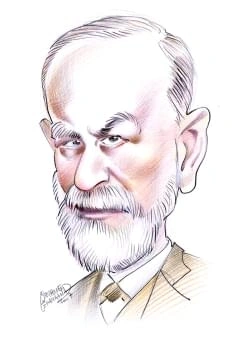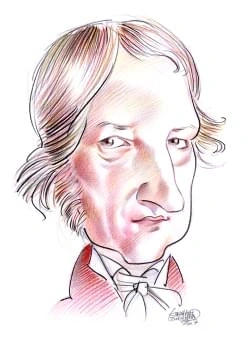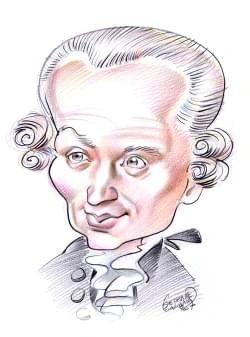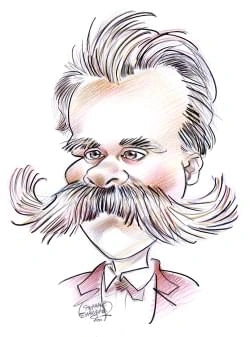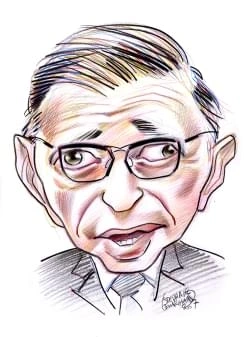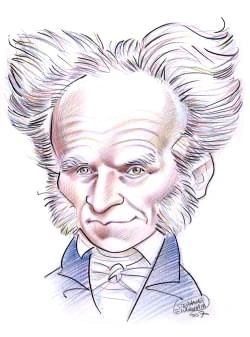464 résultats pour "schools"
-
Mississippi - Facts and Figures.
Native Americans 0.4 percent (2000) Native Hawaiians and other Pacific Islanders less than 0.1 percent (2000) Mixed heritage or not reporting 1.2 percent (2000) Hispanics (of any race) 1.4 percent (2000) HEALTH AND EDUCATIONLife expectancy 73 years (1989-1991) Infant mortality rate 10 deaths per 1,000 live births (2004) Residents per physician 563 people (2005) Residents per hospital bed 227 people (2005) Share of population not covered by health insurance 20.8 percent (2006) Numbe...
-
California - Facts and Figures.
Native Americans 1 percent (2000) Native Hawaiians and other Pacific Islanders 0.3 percent (2000) Mixed heritage or not reporting 21.5 percent (2000) Hispanics (of any race) 32.4 percent (2000) HEALTH AND EDUCATIONLife expectancy 75.9 years (1989-1991) Infant mortality rate 5 deaths per 1,000 live births (2004) Residents per physician 383 people (2005) Residents per hospital bed 515 people (2005) Share of population not covered by health insurance 18.8 percent (2006) Number of stud...
-
Arkansas - Facts and Figures.
Asians 0.1 percent (2000) Native Hawaiians and other Pacific Islanders 0.1 percent (2000) Mixed heritage or not reporting 2.8 percent (2000) Hispanics (of any race) 3.2 percent (2000) HEALTH AND EDUCATIONLife expectancy 74.3 years (1989-1991) Infant mortality rate 8 deaths per 1,000 live births (2004) Residents per physician 494 people (2005) Residents per hospital bed 295 people (2005) Share of population not covered by health insurance 18.9 percent (2006) Number of students per t...
-
Oregon - Facts and Figures.
Native Americans 1.3 percent (2000) Native Hawaiians and other Pacific Islanders 0.2 percent (2000) Mixed heritage or not reporting 7.3 percent (2000) Hispanics (of any race) 8 percent (2000) HEALTH AND EDUCATIONLife expectancy 76.4 years (1989-1991) Infant mortality rate 6 deaths per 1,000 live births (2004) Residents per physician 376 people (2005) Residents per hospital bed 560 people (2005) Share of population not covered by health insurance 17.9 percent (2006) Number of studen...
-
Idaho - Facts and Figures.
Blacks 0.4 percent (2000) Native Hawaiians and other Pacific Islanders 0.1 percent (2000) Mixed heritage or not reporting 6.2 percent (2000) Hispanics (of any race) 7.9 percent (2000) HEALTH AND EDUCATIONLife expectancy 76.9 years (1989-1991) Infant mortality rate 6 deaths per 1,000 live births (2004) Residents per physician 588 people (2005) Residents per hospital bed 433 people (2005) Share of population not covered by health insurance 15.4 percent (2006) Number of students per t...
-
Connecticut - Facts and Figures.
Native Americans 0.3 percent (2000) Native Hawaiians and other Pacific Islanders less than 0.1 percent (2000) Mixed heritage or not reporting 6.5 percent (2000) Hispanics (of any race) 9.4 percent (2000) HEALTH AND EDUCATIONLife expectancy 76.9 years (1989-1991) Infant mortality rate 6 deaths per 1,000 live births (2004) Residents per physician 274 people (2005) Residents per hospital bed 455 people (2005) Share of population not covered by health insurance 9.4 percent (2006) Numbe...
-
New York - Facts and Figures.
Native Americans 0.4 percent (2000) Native Hawaiians and other Pacific Islanders less than 0.1 percent (2000) Mixed heritage or not reporting 10.2 percent (2000) Hispanics (of any race) 15.1 percent (2000) HEALTH AND EDUCATIONLife expectancy 74.7 years (1989-1991) Infant mortality rate 6 deaths per 1,000 live births (2004) Residents per physician 258 people (2005) Residents per hospital bed 306 people (2005) Share of population not covered by health insurance 14 percent (2006) Numb...
-
Massachusetts - Facts and Figures.
Native Americans 0.2 percent (2000) Native Hawaiians and other Pacific Islanders less than 0.1 percent (2000) Mixed heritage or not reporting 6 percent (2000) Hispanics (of any race) 6.8 percent (2000) HEALTH AND EDUCATIONLife expectancy 76.7 years (1989-1991) Infant mortality rate 5 deaths per 1,000 live births (2004) Residents per physician 219 people (2005) Residents per hospital bed 397 people (2005) Share of population not covered by health insurance 10.4 percent (2006) Number...
-
-
Maine - Facts and Figures.
Blacks 0.5 percent (2000) Native Hawaiians and other Pacific Islanders less than 0.1 percent (2000) Mixed heritage or not reporting 1.2 percent (2000) Hispanics (of any race) 0.7 percent (2000) HEALTH AND EDUCATIONLife expectancy 76.4 years (1989-1991) Infant mortality rate 5 deaths per 1,000 live births (2004) Residents per physician 374 people (2005) Residents per hospital bed 377 people (2005) Share of population not covered by health insurance 9.3 percent (2006) Number of stude...
-
Nevada - Facts and Figures.
Native Hawaiians and other Pacific Islanders 0.4 percent (2000) Mixed heritage or not reporting 11.8 percent (2000) Hispanics (of any race) 19.7 percent (2000) HEALTH AND EDUCATIONLife expectancy 74.2 years (1989-1991) Infant mortality rate 6 deaths per 1,000 live births (2004) Residents per physician 534 people (2005) Residents per hospital bed 513 people (2005) Share of population not covered by health insurance 19.6 percent (2006) Number of students per teacher (K-12) 19 (2003) G...
-
Rhode Island - Facts and Figures.
Native Hawaiians and other Pacific Islanders 0.1 percent (2000) Mixed heritage or not reporting 7.7 percent (2000) Hispanics (of any race) 8.7 percent (2000) HEALTH AND EDUCATIONLife expectancy 76.5 years (1989-1991) Infant mortality rate 6 deaths per 1,000 live births (2004) Residents per physician 278 people (2005) Residents per hospital bed 447 people (2005) Share of population not covered by health insurance 8.6 percent (2006) Number of students per teacher (K-12) 13.4 (2003) Go...
-
Wyoming - Facts and Figures.
Native Hawaiians and other Pacific Islanders 0.1 percent (2000) Mixed heritage or not reporting 4.3 percent (2000) Hispanics (of any race) 6.4 percent (2000) HEALTH AND EDUCATIONLife expectancy 76.2 years (1989-1991) Infant mortality rate 7 deaths per 1,000 live births (2004) Residents per physician 536 people (2005) Residents per hospital bed 242 people (2005) Share of population not covered by health insurance 14.6 percent (2006) Number of students per teacher (K-12) 13.3 (2003) G...
-
North Carolina - Facts and Figures.
Native Americans 1.2 percent (2000) Native Hawaiians and other Pacific Islanders less than 0.1 percent (2000) Mixed heritage or not reporting 3.6 percent (2000) Hispanics (of any race) 4.7 percent (2000) HEALTH AND EDUCATIONLife expectancy 74.5 years (1989-1991) Infant mortality rate 8 deaths per 1,000 live births (2004) Residents per physician 395 people (2005) Residents per hospital bed 372 people (2005) Share of population not covered by health insurance 17.9 percent (2006) Numb...
-
Kansas - Facts and Figures.
Native Americans 0.9 percent (2000) Native Hawaiians and other Pacific Islanders less than 0.1 percent (2000) Mixed heritage or not reporting 5.5 percent (2000) Hispanics (of any race) 7 percent (2000) HEALTH AND EDUCATIONLife expectancy 76.8 years (1989-1991) Infant mortality rate 7 deaths per 1,000 live births (2004) Residents per physician 453 people (2005) Residents per hospital bed 272 people (2005) Share of population not covered by health insurance 12.3 percent (2006) Number...
-
Georgia (state) - Facts and Figures.
Native Hawaiians and other Pacific Islanders 0.1 percent (2000) Mixed heritage or not reporting 3.8 percent (2000) Hispanics (of any race) 5.3 percent (2000) HEALTH AND EDUCATIONLife expectancy 73.6 years (1989-1991) Infant mortality rate 9 deaths per 1,000 live births (2004) Residents per physician 457 people (2005) Residents per hospital bed 365 people (2005) Share of population not covered by health insurance 17.7 percent (2006) Number of students per teacher (K-12) 15.7 (2003) G...
-
Delaware - Facts and Figures.
Native Hawaiians and other Pacific Islanders less than 0.1 percent (2000) Mixed heritage or not reporting 3.7 percent (2000) Hispanics (of any race) 4.8 percent (2000) HEALTH AND EDUCATIONLife expectancy 74.8 years (1989-1991) Infant mortality rate 9 deaths per 1,000 live births (2004) Residents per physician 403 people (2005) Residents per hospital bed 421 people (2005) Share of population not covered by health insurance 12.1 percent (2006) Number of students per teacher (K-12) 15.2...
-
-
Alabama - Facts and Figures.
Native Americans 0.5 percent (2000) Native Hawaiians and other Pacific Islanders less than 0.1 percent (2000) Mixed heritage or not reporting 1.6 percent (2000) Hispanics (of any race) 1.7 percent (2000) HEALTH AND EDUCATIONLife expectancy 73.6 years (1989-1991) Infant mortality rate 9 deaths per 1,000 live births (2004) Residents per physician 465 people (2005) Residents per hospital bed 293 people (2005) Share of population not covered by health insurance 15.2 percent (2006) Numb...
-
Louisiana - Facts and Figures.
Native Hawaiians and other Pacific Islanders less than 0.1 percent (2000) Mixed heritage or not reporting 1.8 percent (2000) Hispanics (of any race) 2.4 percent (2000) HEALTH AND EDUCATIONLife expectancy 73 years (1989-1991) Infant mortality rate 10 deaths per 1,000 live births (2004) Residents per physician 393 people (2005) Residents per hospital bed 291 people (2005) Share of population not covered by health insurance 21.9 percent (2006) Number of students per teacher (K-12) 16.6...
-
Minnesota - Facts and Figures.
Native Americans 1.1 percent (2000) Native Hawaiians and other Pacific Islanders less than 0.1 percent (2000) Mixed heritage or not reporting 3 percent (2000) Hispanics (of any race) 2.9 percent (2000) HEALTH AND EDUCATIONLife expectancy 77.8 years (1989-1991) Infant mortality rate 5 deaths per 1,000 live births (2004) Residents per physician 351 people (2005) Residents per hospital bed 320 people (2005) Share of population not covered by health insurance 9.2 percent (2006) Number...
-
Maryland - Facts and Figures.
Native Americans 0.3 percent (2000) Native Hawaiians and other Pacific Islanders less than 0.1 percent (2000) Mixed heritage or not reporting 3.8 percent (2000) Hispanics (of any race) 4.3 percent (2000) HEALTH AND EDUCATIONLife expectancy 74.8 years (1989-1991) Infant mortality rate 8 deaths per 1,000 live births (2004) Residents per physician 242 people (2005) Residents per hospital bed 490 people (2005) Share of population not covered by health insurance 13.8 percent (2006) Numb...
-
Ohio - Facts and Figures.
Native Hawaiians and other Pacific Islanders less than 0.1 percent (2000) Mixed heritage or not reporting 2.2 percent (2000) Hispanics (of any race) 1.9 percent (2000) HEALTH AND EDUCATIONLife expectancy 75.3 years (1989-1991) Infant mortality rate 8 deaths per 1,000 live births (2004) Residents per physician 381 people (2005) Residents per hospital bed 344 people (2005) Share of population not covered by health insurance 10.1 percent (2006) Number of students per teacher (K-12) 15.2...
-
Texas - Facts and Figures.
Native Hawaiians and other Pacific Islanders 0.1 percent (2000) Mixed heritage or not reporting 14.2 percent (2000) Hispanics (of any race) 32 percent (2000) HEALTH AND EDUCATIONLife expectancy 75.1 years (1989-1991) Infant mortality rate 6 deaths per 1,000 live births (2004) Residents per physician 470 people (2005) Residents per hospital bed 394 people (2005) Share of population not covered by health insurance 24.5 percent (2006) Number of students per teacher (K-12) 15 (2003) Gov...
-
Michigan - Facts and Figures.
Native Americans 0.6 percent (2000) Native Hawaiians and other Pacific Islanders less than 0.1 percent (2000) Mixed heritage or not reporting 3.2 percent (2000) Hispanics (of any race) 3.3 percent (2000) HEALTH AND EDUCATIONLife expectancy 75 years (1989-1991) Infant mortality rate 8 deaths per 1,000 live births (2004) Residents per physician 414 people (2005) Residents per hospital bed 386 people (2005) Share of population not covered by health insurance 10.5 percent (2006) Number...
-
Nebraska - Facts and Figures.
Native Hawaiians and other Pacific Islanders less than 0.1 percent (2000) Mixed heritage or not reporting 4.2 percent (2000) Hispanics (of any race) 5.5 percent (2000) HEALTH AND EDUCATIONLife expectancy 76.9 years (1989-1991) Infant mortality rate 6 deaths per 1,000 live births (2004) Residents per physician 418 people (2005) Residents per hospital bed 231 people (2005) Share of population not covered by health insurance 12.3 percent (2006) Number of students per teacher (K-12) 13.6...
-
-
Wisconsin - Facts and Figures.
Native Hawaiians and other Pacific Islanders less than 0.1 percent (2000) Mixed heritage or not reporting 2.8 percent (2000) Hispanics (of any race) 3.6 percent (2000) HEALTH AND EDUCATIONLife expectancy 76.9 years (1989-1991) Infant mortality rate 6 deaths per 1,000 live births (2004) Residents per physician 392 people (2005) Residents per hospital bed 381 people (2005) Share of population not covered by health insurance 8.8 percent (2006) Number of students per teacher (K-12) 15.1...
-
Illinois - Facts and Figures.
Native Hawaiians and other Pacific Islanders less than 0.1 percent (2000) Mixed heritage or not reporting 7.7 percent (2000) Hispanics (of any race) 12.3 percent (2000) HEALTH AND EDUCATIONLife expectancy 74.9 years (1989-1991) Infant mortality rate 8 deaths per 1,000 live births (2004) Residents per physician 367 people (2005) Residents per hospital bed 370 people (2005) Share of population not covered by health insurance 14 percent (2006) Number of students per teacher (K-12) 16.5...
-
Utah - Facts and Figures.
Native Hawaiians and other Pacific Islanders 0.7 percent (2000) Mixed heritage or not reporting 6.3 percent (2000) Hispanics (of any race) 9 percent (2000) HEALTH AND EDUCATIONLife expectancy 77.7 years (1989-1991) Infant mortality rate 5 deaths per 1,000 live births (2004) Residents per physician 477 people (2005) Residents per hospital bed 541 people (2005) Share of population not covered by health insurance 17.4 percent (2006) Number of students per teacher (K-12) 22.4 (2003) Gov...
-
Florida - Facts and Figures.
Native Hawaiians and other Pacific Islanders 0.1 percent (2000) Mixed heritage or not reporting 5.3 percent (2000) Hispanics (of any race) 16.8 percent (2000) HEALTH AND EDUCATIONLife expectancy 75.8 years (1989-1991) Infant mortality rate 7 deaths per 1,000 live births (2004) Residents per physician 410 people (2005) Residents per hospital bed 347 people (2005) Share of population not covered by health insurance 21.2 percent (2006) Number of students per teacher (K-12) 17.9 (2003)...
-
Missouri - Facts and Figures.
Native Americans 0.4 percent (2000) Native Hawaiians and other Pacific Islanders 0.1 percent (2000) Mixed heritage or not reporting 2.3 percent (2000) Hispanics (of any race) 2.1 percent (2000) HEALTH AND EDUCATIONLife expectancy 75.3 years (1989-1991) Infant mortality rate 8 deaths per 1,000 live births (2004) Residents per physician 415 people (2005) Residents per hospital bed 304 people (2005) Share of population not covered by health insurance 13.3 percent (2006) Number of stud...
-
Vermont - Facts and Figures.
Native Hawaiians and other Pacific Islanders less than 0.1 percent (2000) Mixed heritage or not reporting 1.4 percent (2000) Hispanics (of any race) 0.9 percent (2000) HEALTH AND EDUCATIONLife expectancy 76.5 years (1989-1991) Infant mortality rate 5 deaths per 1,000 live births (2004) Residents per physician 274 people (2005) Residents per hospital bed 714 people (2005) Share of population not covered by health insurance 10.2 percent (2006) Number of students per teacher (K-12) 11.3...
-
Tennessee - Facts and Figures.
Native Hawaiians and other Pacific Islanders less than 0.1 percent (2000) Mixed heritage or not reporting 2.1 percent (2000) Hispanics (of any race) 2.2 percent (2000) HEALTH AND EDUCATIONLife expectancy 74.3 years (1989-1991) Infant mortality rate 9 deaths per 1,000 live births (2004) Residents per physician 380 people (2005) Residents per hospital bed 289 people (2005) Share of population not covered by health insurance 13.7 percent (2006) Number of students per teacher (K-12) 15.7...
-
South Carolina - Facts and Figures.
Blacks 29.5 percent (2000) Asians 0.9 percent (2000) Native Americans 0.3 percent (2000) Native Hawaiians and other Pacific Islanders less than 0.1 percent (2000) Mixed heritage or not reporting 2 percent (2000) Hispanics (of any race) 2.4 percent (2000) HEALTH AND EDUCATIONLife expectancy 73.5 years (1989-1991) Infant mortality rate 9 deaths per 1,000 live births (2004) Residents per physician 435 people (2005) Residents per hospital bed 369 people (2005) Share of population no...
-
-
Indiana - Facts and Figures.
Native Hawaiians and other Pacific Islanders less than 0.1 percent (2000) Mixed heritage or not reporting 2.9 percent (2000) Hispanics (of any race) 3.5 percent (2000) HEALTH AND EDUCATIONLife expectancy 75.4 years (1989-1991) Infant mortality rate 8 deaths per 1,000 live births (2004) Residents per physician 466 people (2005) Residents per hospital bed 352 people (2005) Share of population not covered by health insurance 11.8 percent (2006) Number of students per teacher (K-12) 16.9...
-
Pennsylvania - Facts and Figures.
Native Hawaiians and other Pacific Islanders less than 0.1 percent (2000) Mixed heritage or not reporting 2.7 percent (2000) Hispanics (of any race) 3.2 percent (2000) HEALTH AND EDUCATIONLife expectancy 75.4 years (1989-1991) Infant mortality rate 7 deaths per 1,000 live births (2004) Residents per physician 341 people (2005) Residents per hospital bed 313 people (2005) Share of population not covered by health insurance 10 percent (2006) Number of students per teacher (K-12) 15.2 (...
-
Iowa - Facts and Figures.
Native Hawaiians and other Pacific Islanders less than 0.1 percent (2000) Mixed heritage or not reporting 2.4 percent (2000) Hispanics (of any race) 2.8 percent (2000) HEALTH AND EDUCATIONLife expectancy 77.3 years (1989-1991) Infant mortality rate 5 deaths per 1,000 live births (2004) Residents per physician 539 people (2005) Residents per hospital bed 275 people (2005) Share of population not covered by health insurance 10.5 percent (2006) Number of students per teacher (K-12) 13.8...
-
New Hampshire - Facts and Figures.
Native Hawaiians and other Pacific Islanders less than 0.1 percent (2000) Mixed heritage or not reporting 1.7 percent (2000) Hispanics (of any race) 1.7 percent (2000) HEALTH AND EDUCATIONLife expectancy 76.7 years (1989-1991) Infant mortality rate 5 deaths per 1,000 live births (2004) Residents per physician 380 people (2005) Residents per hospital bed 467 people (2005) Share of population not covered by health insurance 11.5 percent (2006) Number of students per teacher (K-12) 13.7...
-
Kentucky - Facts and Figures.
Native Hawaiians and other Pacific Islanders less than 0.1 percent (2000) Mixed heritage or not reporting 1.6 percent (2000) Hispanics (of any race) 1.5 percent (2000) HEALTH AND EDUCATIONLife expectancy 74.4 years (1989-1991) Infant mortality rate 7 deaths per 1,000 live births (2004) Residents per physician 434 people (2005) Residents per hospital bed 280 people (2005) Share of population not covered by health insurance 15.6 percent (2006) Number of students per teacher (K-12) 16.1...
-
New Jersey - Facts and Figures.
Native Hawaiians and other Pacific Islanders less than 0.1 percent (2000) Mixed heritage or not reporting 7.9 percent (2000) Hispanics (of any race) 13.3 percent (2000) HEALTH AND EDUCATIONLife expectancy 75.4 years (1989-1991) Infant mortality rate 6 deaths per 1,000 live births (2004) Residents per physician 323 people (2005) Residents per hospital bed 394 people (2005) Share of population not covered by health insurance 15.5 percent (2006) Number of students per teacher (K-12) 12....
-
North Dakota - Facts and Figures.
Native Hawaiians and other Pacific Islanders less than 0.1 percent (2000) Mixed heritage or not reporting 1.5 percent (2000) Hispanics (of any race) 1.2 percent (2000) HEALTH AND EDUCATIONLife expectancy 77.6 years (1989-1991) Infant mortality rate 6 deaths per 1,000 live births (2004) Residents per physician 417 people (2005) Residents per hospital bed 181 people (2005) Share of population not covered by health insurance 12.2 percent (2006) Number of students per teacher (K-12) 12.7...
-
South Dakota - Facts and Figures.
Native Hawaiians and other Pacific Islanders less than 0.1 percent (2000) Mixed heritage or not reporting 1.8 percent (2000) Hispanics (of any race) 1.4 percent (2000) HEALTH AND EDUCATIONLife expectancy 76.9 years (1989-1991) Infant mortality rate 7 deaths per 1,000 live births (2004) Residents per physician 456 people (2005) Residents per hospital bed 180 people (2005) Share of population not covered by health insurance 11.8 percent (2006) Number of students per teacher (K-12) 13.6...
-
-
Babe Ruth.
earned. But Ruth’s boyish exuberance, compassion for hospitalized children, and personal warmth and generosity endeared him to most people. During the 1926 World Seriesagainst the St. Louis Cardinals, Ruth received word that one of his fans, a boy named Johnny Sylvester, was hospitalized and extremely ill. Ruth wrote the boy atelegram and promised to hit a home run for him in that day’s game. Ruth made good on his promise with not only one, but three homers. And even at the height offame and for...
-
Phoenix (city, Arizona) - geography.
The company’s irrigation system followed the network of canals that were built there by the Hohokam some 500 years earlier. In October 1870, several settlers foundedthe site of modern Phoenix. In recognition of the former Hohokam culture, settler Darrell Duppa likened the new community to the phoenix, a mythological bird thatconsumed itself by fire every 500 years and arose anew from the ashes. Thereafter, the group adopted Phoenix as the settlement’s name. Within a short time the areawas produc...
-
Crafts.
VI POTTERY Ceramic objects can be molded completely by hand or thrown (shaped) on a potter's wheel, a device with a rotating horizontal disk. When the clay hardens, it is fired ina high-temperature oven, or kiln, to strengthen it. To make the object waterproof, glazes may then be applied and the piece fired again. Although hand construction iseasy to master, throwing on the potter's wheel requires practice. Several simple tools are used by potters, including sponges, trimming tools, wooden sha...
-
From The Adventures of Huckleberry Finn - anthology.
'Wherebouts?' says I. 'Down to Silas Phelps's place, two mile below here. He's a runaway nigger, and they've got him. Was you looking for him?' 'You bet I ain't! I run across him in the woods about an hour or two ago, and he said if I hollered he'd cut my livers out—and told me to lay down and stay where Iwas; and I done it. Been there ever since; afeard to come out.' 'Well,' he says, 'you needn't be afeard no more, becuz they've got him. He run off f'm down South, som'ers.' 'It'...
-
Metropolitan Museum of Art.
B Ancient Near Eastern Art The objects in this department range from a vast geographical area in southwest Asia and northeast Africa from around 5000 BC to around AD 600. Notable works include Assyrian reliefs from the palace of King Ashurnasirpal II at Calah (now Nimrud, Iraq), Sumerian sculpture, Anatolian ivories, Iranian bronzes, and Achaemenidand Sassanian works in silver and gold. C Arms and Armor This department is renowned for its collection of European armor from the Middle Ages (5t...
-
Benin - country.
French is the official language of Benin, but most people speak an African language. Each of the country’s ethnic groups has its own language. Fon is the most widelyspoken language. About 52 percent of the population professes traditional religious beliefs, chiefly Vodun, a belief in spirits. Arab merchants introduced Islam to the region, and today it isthe religion of some 20 percent of the people, most of whom live in the north. Christianity, especially Roman Catholicism, is the religion of ab...
-
Suriname (country) - country.
Tongo, a Creole language. Also known as Taki-Taki, Sranang Tongo includes elements of several languages and is the vehicle for most interethnic communication. Otherlanguages spoken in Suriname include Hindi, Javanese, Chinese, English, and French. Small numbers of Native Americans still speak indigenous languages. The main religions in Suriname are Christianity, Islam, and Hinduism. The majority of Christians are Roman Catholics, and members of the Moravian Church predominateamong Protestants. E...
-
Guyana - country.
European patterns of living. People of mixed African and European ancestry form a distinct group in Guyana, maintaining closer social ties to the European communitythan to the African Guyanese community. Asians from the Indian subcontinent began to arrive in the 19th century, following the abolition of slavery in Guyana, to work as indentured and contract laborers. Theycontinued to arrive until 1917, when Britain outlawed indentured servitude. Thousands of Indians chose to remain in Guyana after...
-
-
Tanzania - country.
The population of Tanzania (2008 estimate) is 40,213,162, giving the country an overall population density of 45 persons per sq km (118 per sq mi). Yet the populationdistribution is irregular, with high densities found near fertile soils around Kilimanjaro and the shores of Lake Malawi, and comparatively low density throughout much ofthe interior of the country. In the late 1960s and 1970s the Tanzanian government resettled most of the rural population in collective farming villages as part of i...
-
Astronaut - astronomy.
Every operation during a flight is important and interesting, but many might be boring to an observer. Much of an astronaut’s job is entering computer instructions,preparing samples, making measurements, recording data, fixing what breaks, and adjusting the checklist when something unexpected happens. Sometimes astronautsretrieve or repair satellites, rendezvous or dock with other spacecraft, and do important emergency repairs. The adaptability of the human crew is crucial to the successof missi...
}})
